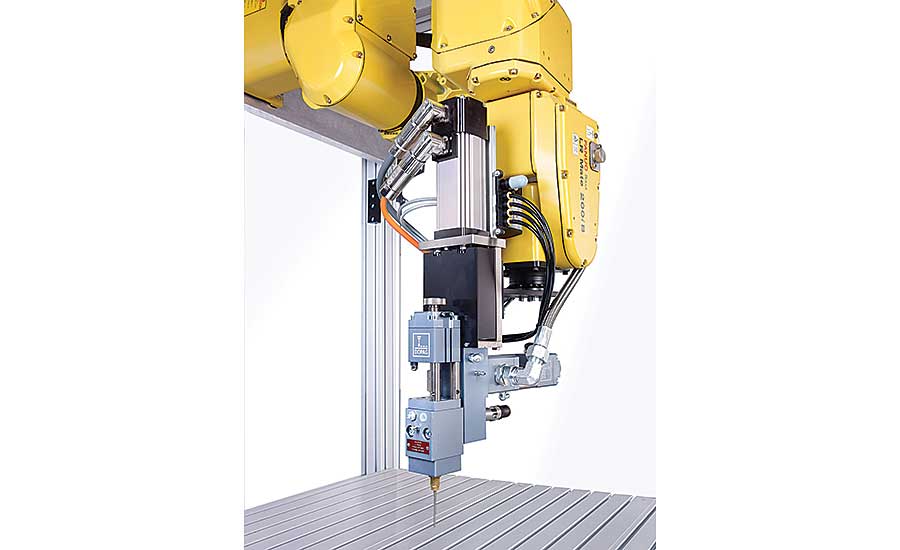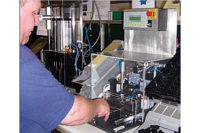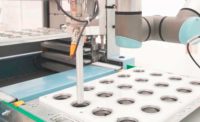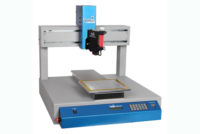Manufacturers that use adhesives and sealants to assemble their products know how critical it is for these materials to be dispensed with accuracy and repeatability. They also know that the best way to ensure this is by installing plant equipment that precisely meters, mixes and dispenses material with short cycle times.
Dopag, a member company of the Germany-based Hilger & Kern Group, has manufactured metering and mixing
equipment for more than 45 years. Its systems and components are used by manufacturers in various industries (automotive, aerospace, renewable energy, electronics, white goods) to process and apply adhesives, greases and oils.
Recently, Dopag developed two new dispensing systems for low-viscosity, high-viscosity and abrasive materials. The Vectodis applies single-component material either in dots or a continuous bead. The Vectomix is intended for multicomponent materials and consists of two synchronized Vectodis systems.
While designing the systems, engineers considered using various types of actuators. First, pneumatic actuators were tried, but they lacked positional accuracy and dynamic response. Then hydraulic actuators were used, but they also had positional-accuracy limitations, as well as excessive maintenance requirements and a tendency to leak fluids.
Finally, Dopag met with Parkem AG, a distributor for Curtiss-Wright Corp. (CWC), and learned all about the Exlar GSM electromechanical actuator from CWC. This actuator features an integrated AC servomotor (with planetary roller screw) and encoder that provide dynamic response and precise material deposition.
In addition, its power-dense design makes it energy efficient and suitable for most industrial environments, including hazardous areas. The actuator also seamlessly integrates with a robot controller in fully automated applications.
Impressed with this extensive list of features and capabilities, Dopag decided to use the actuator in both dispensing systems. The Parkem team, in turn, helped select the proper-size actuator that meets the speed, positional accuracy and space constraint requirements of the Vectodis and Vectomix systems.
In both systems, the actuator is coupled with a pneumatic discharge valve. During operation, the material flow rate is controlled upon entering the mixing block, which is located in front of the plastic mixing tube. A metering computer then moves the actuator’s cylinder and opens the valve to dispense the precise dose. In robotic applications, the computer discharges material at a rate proportional to the robot’s travel speed.
The systems use CANopen communication to transmit real-time data to one or two Xenus servo controllers. With the Vectomix system, data transmission to both controllers occurs simultaneously. A touchscreen interface lets operators easily change application parameters. Technical system support is available locally or remotely via a TeamViewer control application for Windows.
To increase reliability, the system continuously monitors pressure in the metering chamber. It also removes air from the material to be dispensed. Metering units are equipped with snuff-back devices to keep the work area clean, and limited dead space eliminates the possibility of material sedimentation. When abrasives are dispensed, the metering piston needs to be flushed with sealing liquid.
For more information on electromechanical actuators, call 866-508-1306 or visit http://exlar.com/product/gsm-series/resources.




